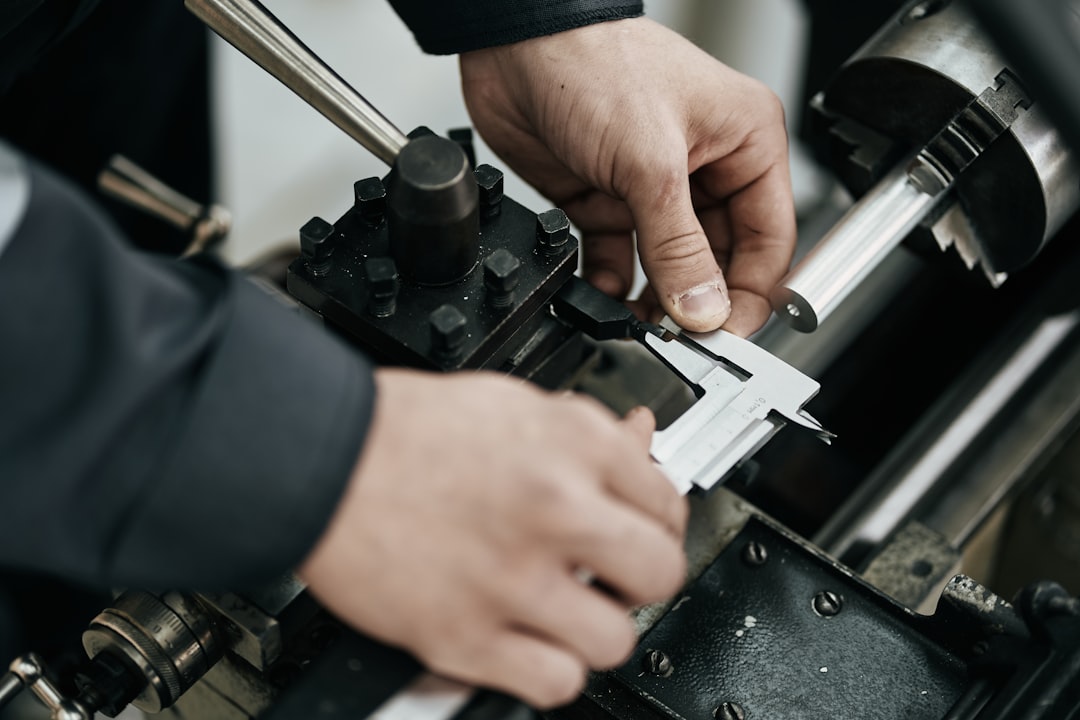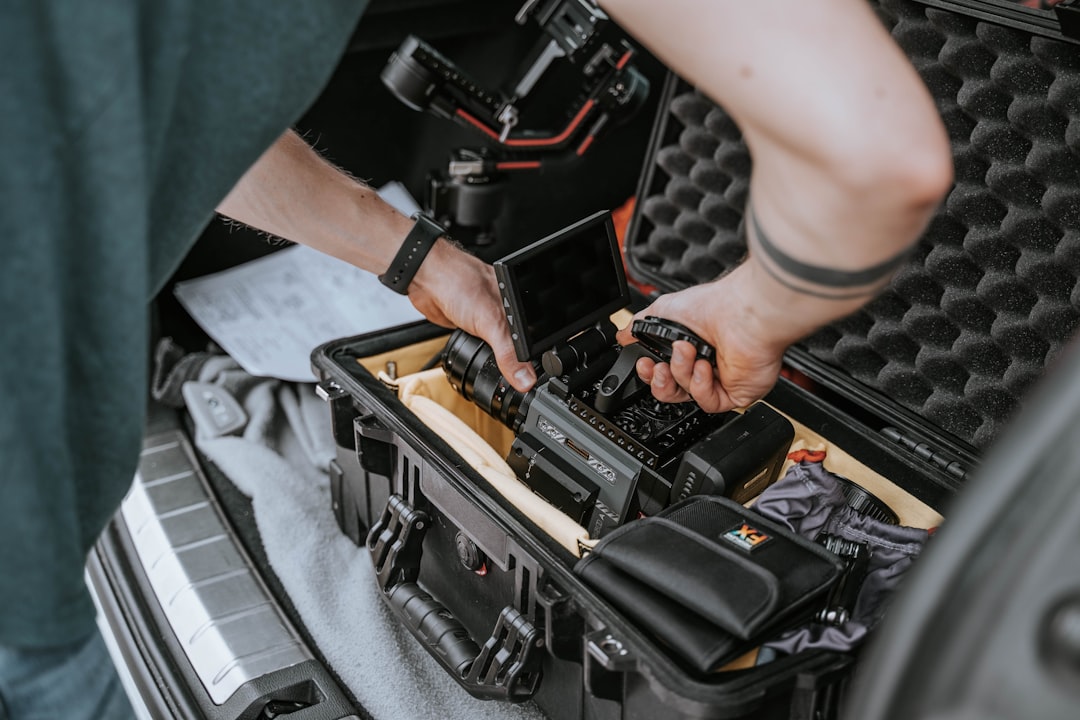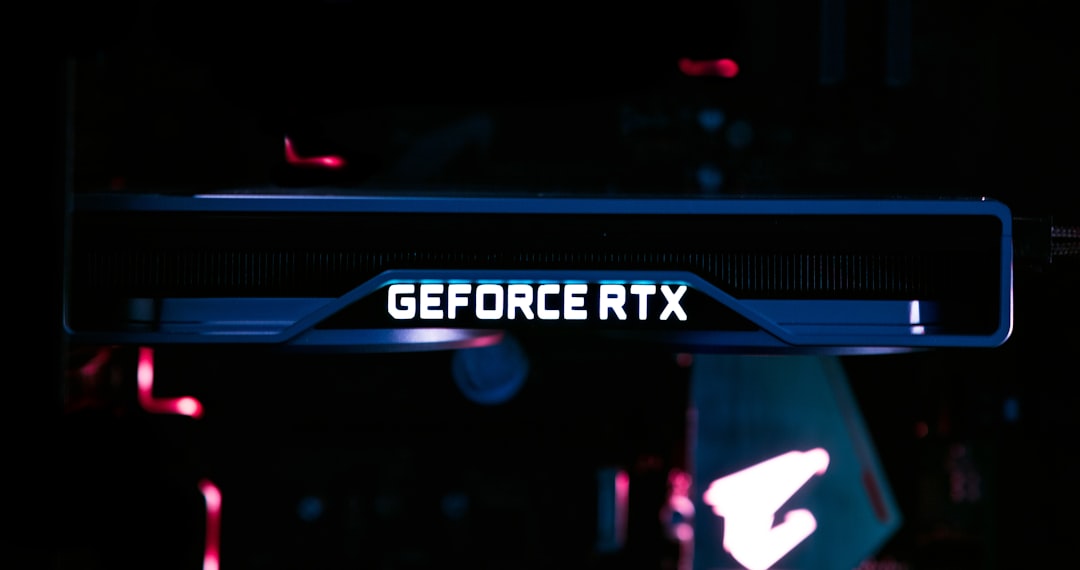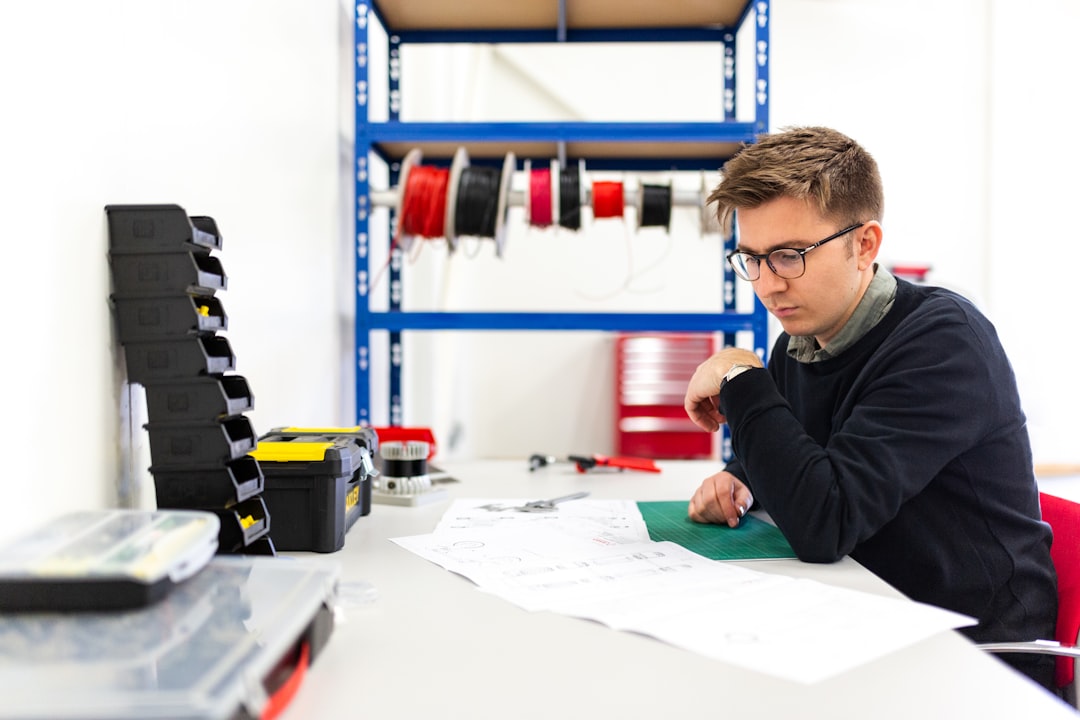

Engage prospects with a scan and streamline customer engagement with FREE QR code marketing tools by Sona – no strings attached!
Create a Free QR CodeFree consultation

No commitment

Engage prospects with a scan and streamline customer engagement with FREE QR code marketing tools by Sona – no strings attached!
Create a Free QR CodeFree consultation

No commitment
The home appliance repair industry is experiencing a rapid digital evolution, with range repair services feeling the pressures of heightened customer expectations and fierce local competition. Customers with malfunctioning ranges, whether gas, electric, or premium lines such as Bosch and Samsung, increasingly demand fast, reliable service and clear communication. Yet, traditional workflows continue to rely on analog tools like business cards or call-in scheduling, making it easy to lose track of high-value prospects and nearly impossible to pinpoint which marketing efforts truly generate revenue.
These analog touchpoints often frustrate customers and contribute to missed opportunities when potential leads go untracked or unconverted, especially if they never enter the CRM. QR codes in marketing are emerging as a bridge, transforming offline moments into measurable digital actions. By applying QR codes across touchpoints, range repair providers can capture customer intent at every stage, from scheduling appointments and collecting reviews to surfacing anonymous traffic and assessing marketing efficacy.
This guide explores tactical ways to use QR codes throughout the range repair customer journey. By optimizing placement and leveraging advanced analytics, businesses can identify and engage high-fit leads, deliver relevant experiences, and gain insights into every interaction. This helps overcome the visibility and attribution challenges that have long plagued the industry.

Most range repair services still rely on paper intake sheets, voicemail callbacks, and static print materials that never convert. These processes add friction to the customer journey and make it difficult to know which campaigns actually work. QR codes offer customers a frictionless gateway from physical materials to digital actions like booking, checking a warranty, or getting a repair estimate, all while capturing the intent signals you need to improve performance over time.
By replacing analog steps with scannable experiences, you can streamline operations and measure outcomes more precisely. Printed door hangers can become scan-to-schedule funnels. Business cards can become vCards that are saved to the phone with one tap. Even a technician’s clipboard can carry a QR for parts reorders, estimates, and payment links. When these scans feed into a platform like Sona QR, each interaction becomes data you can act on.
With the right strategy, QR codes do more than make marketing assets interactive. They give your team a consistent, trackable way to move customers from interest to action and from action to revenue.

Traditional paper invoices, call-in appointment scheduling, and untagged print advertising leave service providers blind to most customer journey touchpoints. A homeowner may see a van, flyer, or magnet, intend to book, then forget. Others search manuals or warranty documents for help, then abandon when the next step requires a long web search or phone call. Without a direct digital bridge, those high-value moments evaporate, and neither marketing nor operations learn what went wrong.
QR codes solve these offline-to-online gaps by giving customers a single, intuitive action that connects them to exactly what they need. When you can update destinations dynamically, track scans in a dashboard, and integrate the data into your CRM, you turn every physical surface into a measurable channel. This is particularly powerful in range repair where the customer’s urgency is high and the window for conversion can be narrow.
The result is not just a better customer experience. It is a measurable system for proving which touchpoints create appointments, which messages convert, and which investments deserve more budget.
In range repair, each customer moment is different. Someone might be staring at an error code on their cooktop, standing at a retailer counter with a brochure, or glancing at a service vehicle parked on their street. Different QR formats let you tailor the action to the context, and dynamic QR codes make it simple to manage them all from one place.
Start by prioritizing formats that remove friction from your strongest revenue paths. Booking and troubleshooting are usually the top drivers, followed by warranty activation, repeat service prompts, and review collection. With Sona QR, you can create and manage all of the following formats under one dashboard with centralized analytics.
Dynamic codes are your best choice for campaigns that require tracking, testing, or frequent content changes. Static codes are acceptable for evergreen assets like a general contact card, but they limit your agility and measurement capabilities.

Range repair businesses compete locally, which means your physical presence is often the first and most frequent customer touchpoint. If your vehicles, invoices, and packaging send people to a generic homepage or a phone number that goes to voicemail, you are missing a measurable opportunity. QR codes allow you to capture interest as it happens and guide it to a conversion context that matches the moment.
Focus on placements that align with the most common customer behaviors. When a range fails, urgency spikes and attention narrows. The best placements make it effortless to book or get help without searching, navigating multiple pages, or waiting on hold. By assigning unique codes to each asset, you can see exactly which ones have the most impact and double down where it counts.
By concentrating on these high-intent surfaces and tracking performance, you can steadily grow booked jobs, repeat visits, and average order value while reducing marketing waste.

The most effective QR deployments tie directly to your core business goals: more appointments, higher satisfaction, and better lifetime value. In range repair, three use cases consistently deliver measurable results when executed with clear messaging and reliable landing experiences.
First, map each use case to a specific physical asset and business outcome. Then craft a short, promise-driven CTA that matches the user’s context. Finally, assign unique codes to each placement so you can optimize based on real-world performance.
You can expand these with add-on flows like “Scan to pay invoice,” “Scan to track part order,” or “Scan to join loyalty program,” all of which deepen engagement and make every interaction measurable.
Every scan is a signal. It tells you what someone wanted, where they were, and how urgent their need might be. A homeowner who scans a troubleshooting sticker on a range is fundamentally different from someone who scans a mailer coupon. By deploying unique codes across touchpoints, you can segment audiences automatically and tailor your follow-up.
The key is to capture enough context at the scan to personalize the next step. Sona QR lets you tag codes by use case, location, and campaign so the data flows into your CRM and ad platforms without manual work. From there, you can trigger the right playbooks: nurture sequences for researchers, urgent callbacks for emergency scans, and upsell offers for loyal customers.
In range repair, a segmented retargeting strategy turns one-time scans into repeat customers and referrals, raising the lifetime value of every household you serve.
QR codes are connectors. They bridge the gap between your offline presence and your digital funnel, and they make previously untrackable channels finally measurable. When you place QR codes consistently across your marketing mix and unify the data in Sona QR, you get a clear picture of what drives revenue and where to invest next. See this QR marketing guide for additional ideas.
Start by aligning each channel with a logical QR destination. A vehicle wrap should prioritize fast booking. An invoice should emphasize warranty registration or review capture. A direct mailer can route to a localized offer with an availability calendar. The smoother the path to action, the higher your conversion rates and the cleaner your data.
QR codes serve as the offline onramp to your digital marketing engine. With a centralized platform like Sona QR, you can manage all your codes, monitor performance, sync scan data with your CRM, and convert real-world interest into booked jobs and repeat business.
Successful QR deployments follow a repeatable process: pick the right use case, build the right destination, deploy across high-impact surfaces, and optimize continually. While every business is unique, the steps below apply across most range repair scenarios and can be implemented in days, not months.
Treat this as an operating playbook for your team. Once the first campaign is live, use early performance data to refine CTAs, layouts, and placements. The faster you iterate, the faster you find your highest converting combinations.
Start with clear business goals. In range repair, top priorities often include increasing booked appointments, boosting review volume, promoting maintenance plans, and decreasing call-in volume for simple troubleshooting. Select a single goal to focus on first, then match it to the most logical scan experience.
Identify where leads currently fall through the cracks. If missing callbacks are common, deploy scan-to-booking on vehicles and magnets. If reviews are low, add scan-to-review QR codes on invoices and technician thank-you cards. Use Google reviews QR. If warranty activations lag, add a QR to installation packets and service receipts.
Decide between static and dynamic QR codes. Static codes are permanent and cannot be changed once printed, which is fine for evergreen contact information. Dynamic codes can be edited, tagged, and tracked, which makes them better for campaigns that will evolve or require analytics and retargeting.
For most growth initiatives, dynamic QR codes are the right choice. They unlock A/B testing, personalization, and post-scan workflows. With Sona QR, you can manage destinations, UTM parameters, and audience tags centrally, which future-proofs your investment in printed assets.
Design is not just about aesthetics. It communicates the promise, lowers scan friction, and increases trust. Your QR code should be large enough to scan from the expected distance, surrounded by adequate white space, and framed by a benefit-led CTA that answers “Why should I scan this right now?”
Before large-scale printing, test scannability in realistic settings. Check different lighting conditions, angles, and device types. Validate that the landing page loads quickly, is mobile-optimized, and makes the primary action obvious. Small design improvements can lead to meaningful conversion lifts.
Roll out codes across the surfaces that align with your immediate goal. If your aim is appointment volume, prioritize vehicles, storefront windows, door hangers, and flyers. If your aim is retention and reviews, prioritize invoices, thank-you cards, and follow-up emails that include QR codes for quick feedback and plan enrollment.
Stagger deployment so you can isolate what works. Begin with two or three placements and compare performance. Then expand to additional channels using learnings from the first wave. Always assign unique codes per asset so your analytics remain clean and actionable.
Analytics are where QR campaigns truly shine. Monitor scans by placement, daypart, and device. Track conversion rates from scan to booking, scan to review, and scan to plan enrollment. Use A/B tests for CTAs, layouts, and offer framing. Feed results into your budget and staffing plans so you allocate resources where demand is strongest.
Sona QR makes optimization continuous. Update destinations without reprinting, adjust UTMs for better attribution, and trigger automated follow-up flows based on scan behavior and context. Over time, these improvements compound into lower acquisition costs and higher revenue per customer.

For many range repair businesses, the hardest part of marketing is connecting spend to outcomes. You print door hangers and wrap vans, but you cannot see which assets drove bookings or which neighborhoods are most responsive. QR codes change the equation by delivering scan-level data and tying it to appointments, upsells, and reviews. When paired with Sona QR and Sona.com, you move from guesswork to a cohesive narrative of how interest becomes income. See Sona’s blog post The Essential Guide to Offline Attribution.
The most valuable insight is not just the scan count but the progression that follows. A homeowner may scan an error-code sticker, read a guide, and return two days later to book. Another may scan a mailer and convert within five minutes. With identity resolution and multi-touch attribution, see Sona’s blog post Single vs Multi-Touch Attribution Models, Sona helps connect these dots, proving the role each touchpoint plays and guiding smarter investments.
When you operationalize this data, QR codes become a core component of your performance marketing stack, not a gimmick. You will know which surfaces consistently pay off and where to double down.
Once your first campaigns are live, scaling success is about clarity, consistency, and continuous learning. The more granular your tracking, the more confident your decisions. The more you align QR experiences to real customer moments, the higher your conversion rates and customer satisfaction.
Avoid common pitfalls like sending scans to a generic homepage, burying the booking button below the fold, or using tiny codes that cannot be scanned from typical distances. Instead, use the tips below to turn QR codes into a reliable engine for growth.
Creative deployments can multiply results. For example, a fridge magnet with “Scan for same-day range repair” keeps you within easy reach for emergencies. A thank-you card with “Scan to get 10 percent off your annual maintenance plan” drives retention and upsells. Small touches like these add up.
The modern range repair market rewards businesses that transform every customer touchpoint into a measurable opportunity. QR codes are the connective tissue that turns flyers, vans, invoices, and appliance stickers into instant access points for booking, support, and loyalty. When executed with clear CTAs and paired with analytics, they close the loop on marketing attribution and operational performance.
For range repair service providers, QR codes are not a fad but a practical remedy for lost leads, short-lived interest, and fragmented data. When woven throughout the customer journey and centralized in a platform like Sona QR, they deliver three outcomes that matter most: instant engagement, a connected experience from awareness to conversion, and actionable data that ties scans to revenue. With Sona QR, you can generate your first codes in minutes, deploy them across your most visible surfaces, and finally measure the return on every printed asset. Start creating QR codes for free.
QR codes have revolutionized the range repair services industry by transforming how technicians and customers access vital information quickly and efficiently. From instant repair guides to seamless appointment scheduling, QR codes deliver faster, smarter service that enhances customer satisfaction and streamlines operations. Imagine your clients scanning a code to receive troubleshooting tips or warranty details on the spot—turning every interaction into an opportunity for trust and loyalty.
With Sona QR, creating dynamic, trackable QR codes tailored for range repair services is effortless. Update repair instructions or promotional offers instantly without reprinting, and gain valuable insights into customer engagement and service effectiveness. This technology not only improves the repair experience but also drives customer acquisition and retention through meaningful, data-driven connections.
Start for free with Sona QR today and empower your range repair business to deliver exceptional service and measurable growth—one scan at a time.
Effective range appliance repair involves diagnosing the issue, using troubleshooting guides, and booking professional technicians through streamlined digital tools such as QR code-enabled scheduling platforms.
Common issues include malfunctioning gas or electric ranges, error codes on cooktops, warranty activations, and the need for timely maintenance or parts replacement.
Professional range repair services can be found locally through QR codes placed on technician vehicles, flyers, appliance stickers, or local retail displays that link directly to booking forms or contact information.
QR codes connect offline materials like business cards, invoices, and vehicle decals to digital actions such as booking appointments, checking warranties, troubleshooting, and collecting reviews, enhancing customer engagement and operational tracking.
Benefits include eliminating lead leakage, gaining clear attribution of marketing efforts, improving conversion rates with actionable calls to scan, automating follow-ups, and providing measurable insights that optimize marketing and service delivery.
QR codes offer a frictionless way for customers to access booking, troubleshooting, warranty claims, and payment options instantly without searching or calling, speeding up service and reducing frustration.
Common QR code formats include web links for booking and guides, vCards for contact saving, SMS or email actions for service requests, Wi-Fi access for technician check-ins, and app download links for branded portals.
Businesses can assign unique QR codes to different assets and locations, track scan data by time, place, and device, integrate data into CRMs, and measure which touchpoints lead to bookings and revenue.
Effective placements include technician vehicles and uniforms, appliance packaging and manuals, service receipts and warranty documents, retail displays, local flyers, and direct mailers.
Begin by selecting a clear business goal, choose the appropriate QR code type (dynamic preferred), design and test the QR code with clear CTAs, deploy it across high-impact channels, and continuously track and optimize performance.
Data analytics track scans, measure engagement across channels, attribute revenue to specific touchpoints, enable real-time adjustments, and help optimize marketing spend and operational efficiency.
By tagging QR codes by use case, location, and campaign, businesses can segment audiences based on intent and behavior, sync data to CRMs and ad platforms, and personalize follow-up offers and reminders.
Dynamic QR codes allow real-time content updates, tracking, retargeting, and analytics without reprinting, making them more flexible and effective for evolving campaigns.
QR codes replace analog intake methods with digital forms that automatically capture and route inquiries to CRMs, ensuring no lead is lost or forgotten.
Yes, QR code platforms can trigger automated workflows such as confirmation messages, reminders, and upsell offers via SMS or email after a scan.
Use Sona QR's trackable codes to improve customer acquisition and engagement today.
Create Your FREE Trackable QR Code in SecondsJoin results-focused teams combining Sona Platform automation with advanced Google Ads strategies to scale lead generation

Connect your existing CRM

Free Account Enrichment

No setup fees
No commitment required

Free consultation

Get a custom Google Ads roadmap for your business






Launch campaigns that generate qualified leads in 30 days or less.
